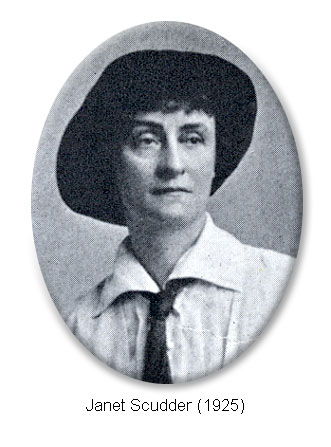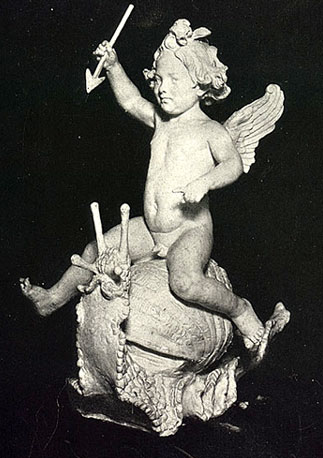 Janet
Scudder
Janet
Scudder
Janet Scudder's career as a sculptor was just beginning when she was asked at age 31 to create a piece to be part of the overall sculpture plan of the Exposition. The single piece, "Amor on a Snail," (aka "Love Riding on a Snail") can be seen below. She was also invited to display three pieces in the Exposition Art Building, the seal of the New York Bar Assocation, a bas relief portrait of "Miss Emmett," and a clock incorporating her "Boy on a Snail."
Born in Terra Haute, Indiana, to a poor family, Netta Deweze Frazee Scudder knew from the time she was small that she wanted to pursue a career in art. Through encouragement by her teachers and sacrifice by her family, she was able to study at the Cincinnati Academy of Art at age 18. It was there she changed her first name to Janet.
She found employment with Lorado Taft for his project to produce the plaster decorations for the Columbian Exposition (1893 Chicago World's Fair), acquiring valuable technical skills. From there she persuaded Frederick MacMonnies, a well-known American sculptor working in Paris, to permit her to study with him. It was during a second trip to Europe, financed by a wealthy friend's family, that she discovered her desire to create garden and fountain sculpture that would please and delight her future clients as much as the subject pleased her.
 This
apprenticeship should have opened doors for her in employment and continuing
education, but prejudice against women artists by such as the great sculptor
Augustus Saint Gaudens slowed her progress toward her goal of making money from
her art.
This
apprenticeship should have opened doors for her in employment and continuing
education, but prejudice against women artists by such as the great sculptor
Augustus Saint Gaudens slowed her progress toward her goal of making money from
her art.
Fortunately, her persistence in trying to attract the attention of Stanford White was successful and, in 1900, she sold her first fountain, "The Frog Fountain" to him for a Long Island estate he was designing. Her career was launched and she went on to design sculpture for wealthy Americans like John D. Rockefeller who wanted and could afford to have a sculptor create for their landscapes. She eventually purchased a home outside Paris and divided her time between New York and Europe. In her later years, she turned her talents to painting.
Driven out of France by World War I, she was forced to leave again on the eve of World War II, returning to America for the last time in 1939. She died the next year at age 70.

Location of the Boy on a Snail sculpture.